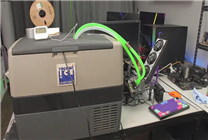The Truth About Anti-Blue Light Phone Films: What You Need to Know
In recent years, the demand for eye protection products has surged, leading to a growing market for anti-blue light mobile phone films. Many e-commerce platforms boast that these films can "proof blue light," "protect your eyes," and "reduce fatigue." Some even claim their products offer an impressive "99% anti-blue light" barrier. However, the reality appears to be quite different.
The Reality Behind Claims
A recent investigation revealed alarming discrepancies between the claims made by merchants and the actual effectiveness of these films. Reports indicate that a variety of anti-blue light films were purchased from different sellers, with prices ranging from approximately $1.40 to $20. Testing revealed that the actual blue light barrier rates of these films were shockingly low, with four models showing barrier rates between 0.1% and 16.4%. Industry standards suggest that a minimum barrier rate of 20% is essential for any product to be considered effective.
Even more troubling is that some of these films are described as having an anti-blue light effect close to that of common household plastic wrap. Such revelations call into question the integrity of the marketing tactics employed by some vendors.
Expert Insights on Blue Light Blocking
Experts in the field have weighed in on the misleading claims regarding the anti-blue light efficacy of mobile films. They emphasize that blue light is crucial for color rendering on screens. Therefore, if a film effectively blocks all blue light, it would severely distort the phone’s display and render the viewing experience nearly unbearable. The assertion that a product could block 99% or even 100% of blue light is thus highly dubious.
Understanding the Technology
With increased demand for optical protection, the technology behind mobile phone films has evolved. Today’s anti-blue light films often utilize coatings that incorporate particulate materials to filter out blue light. Unfortunately, the quality of these coatings varies significantly, leading to wide inconsistencies between advertised and actual performance.
Manufacturers typically conduct research and development in collaboration with scientific institutions or healthcare organizations. However, as there are currently no stringent industry standards, confusion surrounding product attributes is rampant. Some sellers mislead consumers by marketing standard mobile films as anti-blue light films, often pushing inferior products under the guise of higher quality.
Recognizing Genuine Anti-Blue Light Features
An easy way for consumers to ascertain whether a mobile phone film offers true anti-blue light protection is through visual checks. Films with effective blue light filtering typically exhibit a light yellow hue against a white background and may appear light blue under strong lighting. Moreover, illuminating the film with a purple light can reveal whether it contains a legitimate anti-blue light coating. If blue light reflects off the film, it indicates the absence of effective filtering agents.
Making an Informed Choice
As consumer awareness grows regarding the importance of eye health, it is essential to approach the purchase of mobile phone films with caution and informed judgment. Always look for transparency in product claims and seek out manufacturers who provide verifiable evidence of their films’ effectiveness.
In summary, while the marketing slogans may entice consumers looking for eye protection, the current landscape suggests a significant gap between expectation and reality in the anti-blue light film market. By understanding the technology and recognizing the signs of genuine products versus gimmicks, consumers can make better choices that genuinely benefit their eye health.






